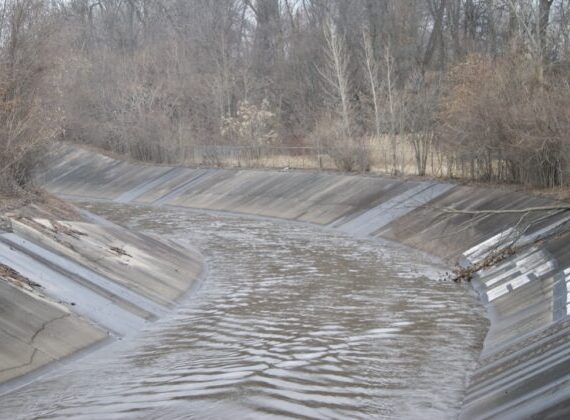
Pope Park Recreation Center, now being called the Samuel V. Arroyo Recreation Center, played host to the final public input session for the Capital Parks Master Plan Monday night. This was the only of three meetings to be held in one of the city’s parks; the other two were at the Hartford Public Library.
Enthusiasm and engagement was low. New material was sparse. The audience was told that results from the online surveys were in, but that “the team” would not be spending any time sharing this information with the group who had come to hear more about potential plans and give feedback on them.
Most of the evening was a rehash of previous meetings, the process, and a mix of abstract concepts. There was no question-and-answer period. After the presentation was given, residents were told to write down their top three items (desires? dislikes?) on postcards. From there, the meeting seemed to fall apart.

Does Input Matter?
There has been more of an effort with this project than with others to get public comment. Besides the three meetings, there was an online survey used to collect thoughts on the parks and there continues to be a feedback form on the Sasaki website.
But what has happened to those ideas?
Materials from the presentation in October did not include all remarks made in the first meeting. Suggestions challenging the iQuilt plan seemed to be omitted from record. Another slide providing early data on barriers to park and recreation program use stated in a large font that “use is hindered by a lack of information, maintenance, and safety concerns,” as if those were the top three issues. Looking at the numbers directly next to the statement, the top three concerns are actually the lack of information about services, poor maintenance, and programs being offered that park users do not have an interest in. During the first meeting, there were plenty of remarks about programs park users would enjoy, but these did not seem to go anywhere.
On other slides, only the negative comments given about Pope Park and Colt Park were shown, despite there being positive comments submitted. As expected, Bushnell Park, Elizabeth Park, and Riverside Park were portrayed as favored.
There were also claims that many comments came in suggesting that the parks need better marketing and branding. From everything witnessed in the first meeting, there was no indication that the public was pushing for yet another branding campaign, which is a creature different from marketing the programs and events offered at the parks.
During Monday’s meeting, it seemed almost nothing from the first meeting had been incorporated. There was no mention of leash law enforcement, programming, cooking grills, or historic fencing at South Green. Allowing some areas of parks to “renaturalize” and creating better infrastructure for cyclists seemed to be the only items, besides that perennial complaint about ATVs, that made it into this round. It was suggested that hillsides and other areas allowed to renaturalize might discourage ATV use in parks.
It was unclear if those previous ideas from the other meetings and survey were mostly discarded or if the team opted to just not discuss them.

Bike Lines and Lanes: The High Point
The concept of “bike lines” was re-introduced with more details provided.
This would be a combination of bike lanes and sharrows, marked with different color paints to delineate routes, much like how subways have a “red line” or “green line.”
This bike network would include signs indicating the distance to and direction of parks, neighborhoods, and neighboring towns.
Not sure this was requested, but one team member said that “Hartford has an underground art scene” and promoted the idea of using “unconventional wayfinding art.” None of the examples shown looked like they would help anyone to navigate — if anything, they would do the opposite — though they were interesting to look at.
Francisco, one of the four team members present who apparently lacked last names, said that “money is not the issue here, it’s will,” regarding the bike friendly changes.
Sharrows, one of the proposed changes, are the arrows painted on roads suggesting to motorists that they share the road with cyclists. Except for highways, however, cyclists can be on all roads, making the sharrows redundant. Cyclists themselves are not always sure what these symbols indicate. For instance, there are roads with sharrows painted in the center of a lane. Does this mean that cyclists should ride in the middle, or still be in the right portion of the lane?

It was said that the connected bike network could be completed in a 1-3 year time frame.
Maintenance and Roads
One team member said that maintenance would require “a team effort” from the “City,” “park users,” and “citizens and other stakeholders.” The park users would be tasked with “encouraging civic behavior” and “loving parks.” The City would be in charge of rule enforcement, positive signage, and park rangers.
No concrete details were provided to explain how problems like illegal dumping would be curbed. Right now, there are many signs posted in Keney Park. Police make their presence known there. There are rangers. Still, there is illegal dumping.
There was mention of how Goodwin Park might be changing its road, but this is happening independent of the Capital Parks Master Plan. Those familiar with the park have seen that the road was barricaded months ago, making through-traffic for motor vehicles more challenging.
Private Enterprise in Parks
Giving Madison Square Park as an example of a place that turned around through some maintenance adjustments and the opening of the “Shake Shack,” a stand operated by a third party, the same was suggested for certain parks here, namely Colt Park where there are a number of sporting events on weekends.

It was not mentioned in the meeting, but there are typically hot dog carts and the like that show up around that particular park.
With the “Shake Shack,” a certain percentage of proceeds goes back to the park, according to the team members.
A second example was given for how our public parks could be used by private enterprise. The Adventure Park in Bridgeport has created a draw with its aerial forest park.
These were presented as ways to generate revenue, along with potentially charging “nominal” fees for programs like yoga classes and use of the public pools. It was said that people value experiences more if they have to pay something, even if it is a small amount.
Next
Final results from the survey, which is now closed, will be posted online. There continues to be a feedback form open on the Sasaki site.
The team says that a final report should be available in late January.


Tony C
Francisco Gomes (FGomes@fhiplan.com).
Glad that the bike route connections has been a strong point of the parks plan. That is a missing piece in Hartford right now. We have some segmented and disconnected bicycle infrastructure and this will put priority on making a connected system. Sharrows are a reminder to drivers that cyclists are allowed and actually safer when riding in the street rather than the sidewalk. I think there are design standards for placement of sharrows, but they are a relatively new street marking. West Hartford started using them in the last 5 years or so.
http://www.fhwa.dot.gov/publications/research/safety/pedbike/10041/10041.pdf
Unfortunate that the info session wasn’t more satisfying. There was a ton of public input from the surveys and first two input sessions.
Kerri Provost
Tony,
I know the purpose of sharrows and you know I know this.
But ask around, ask other cyclists. Are they straightforward or do they present confusion? It’d be great to get cyclists off the sidewalks and onto the streets where they belong, but you must know that more has to be done than just putting paint on the ground for that to happen. I routinely see people riding on the sidewalks of Capitol Avenue rather than in the bike lanes that are right next to them. These are marked lanes. No ambiguity, yet cyclists still ride on sidewalks. The CT DOT, as you know, encourages this even if sidewalk-riding is more dangerous. We see security guards for State properties riding on sidewalks around Capitol Avenue.
I’m wondering if Bike Walk CT is doing any kind of public education piece to teach the public that cyclists belong on the street.
The point about the names was that nobody introduced themselves. Francisco was the only one I knew, just because I knew him. It felt like the assumption was that everyone present had been to all the meetings, which I’m sure some had. Anyway, it had a completely different feel from the previous ones. Is it burnout? Is it that people would rather die than go to Pope Park at night (I live nearby and walked through it, as I do often)? Is it that there was nothing new to be excited about? The bike info was really the only thing to emerge worth talking about.
Anyway, I was told that I made this meeting sound more interesting than it actually was.
Francisco
I’m sorry that you are not a fan of sharrows. They can be a very effective way finding device. Also, it was nice to meet you at Kyle and Amy’s Party. By the way, my last name is Gomes.
Kerri Provost
I don’t care one way or the other about sharrows, but they are controversial among cyclists.
It was nice to meet you as well.
Justin
@Tony @Francisco
Sharrows are great, on chill back streets that don’t need full bike lanes. They are the absolute pits on busier streets that need a full bike lane (see cases in San Diego, New Haven, even San Francisco when they first started using sharrows more than a decade ago–they are really phasing them out now because they are really only good on already-calmed streets)
We get into trouble when we start putting sharrows on streets where it is ‘impossible to put in a bike lane.’ Of course its almost never impossible to add a proper lane on almost any street, just no political will to remove a lane of traffic or some parking. (I put this on my triangle at this parks meeting).
I looked closely at the bike map for Hartford that Francisco and his team showed at these park meetings and from what I can see it doesn’t look like there are plans to put sharrows on nasty streets that need bike lanes instead. And that’s fantastic. So I think it’s good for those of us cyclists who are wary of sharrowing busy streets to keep an eye out for such plans, but from what I can see there isn’t that threat right now in Hartford. The bike network and park connectivity plan really looks great and I’m super excited about it.
-Justin
Tony C
Kerri – I just last week on an easterly walk spent some time in Baby Pope Park and came upon the granite benches in your photo. What an odd space. I sat underneath the billboard and mused on life for a spell, which seemed to be the appropriate thing to do. I do believe that on Hamilton Street someone took some pot shots at me with a paint ball gun. What a city!
Kerri Provost
That’s Pope Park West, not Baby Pope. Baby Pope is over at Russ/Putnam/Putnam Heights and there aren’t any granite benches there.
I need to know more about the paintball.
Tony C
Correction. Westerly.